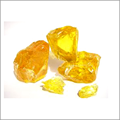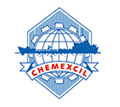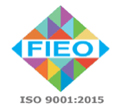 Gum Rosin is a solid form of resin obtained
from pines and some other plants, mostly conifers, produced by
heating fresh liquid resin to vaporize the volatile liquid
terpene components. It is semi-transparent and varies in color
from yellow to black. At room temperature rosin is brittle, but
it melts at stove-top temperatures. It chiefly consists of
different resin acids, especially abietic acid.
Gum Rosin is a solid form of resin obtained
from pines and some other plants, mostly conifers, produced by
heating fresh liquid resin to vaporize the volatile liquid
terpene components. It is semi-transparent and varies in color
from yellow to black. At room temperature rosin is brittle, but
it melts at stove-top temperatures. It chiefly consists of
different resin acids, especially abietic acid.
Rosin is an ingredient in printing inks, photocopying and laser
printing paper, varnishes, adhesives (glues), soap, paper
sizing, soda, soldering fluxes, and sealing wax.
Rosin can be used as a glazing agent in medicines and chewing
gum. It is denoted by E number E915. A related glycerol ester
(E445) can be used as an emulsifier in soft drinks. In
pharmaceuticals, rosin forms an ingredient in several plasters
and ointments.
In industry, rosin is the precursor to the flux used in
soldering. The lead-tin solder commonly used in electronics has
about 1% rosin as a flux core helping the molten metal flow and
making a better connection by reducing the refractory solid
oxide layer formed at the surface back to metal. It is frequently
seen as the burnt or clear residue around new soldering.
A mixture of pitch and rosin is used to make a surface against
which glass is polished when making optical components such as
lenses.
The commercial grades are numerous, ranging by letters from A, the
darkest, to N, extra pale, superior to which are W, window glass,
and WW, water white varieties, the latter having about three
times the value of the common qualities.
We can supply high quality Gum Rosin from our principals in China.
Please contact us for high quality Gum Rosin.




